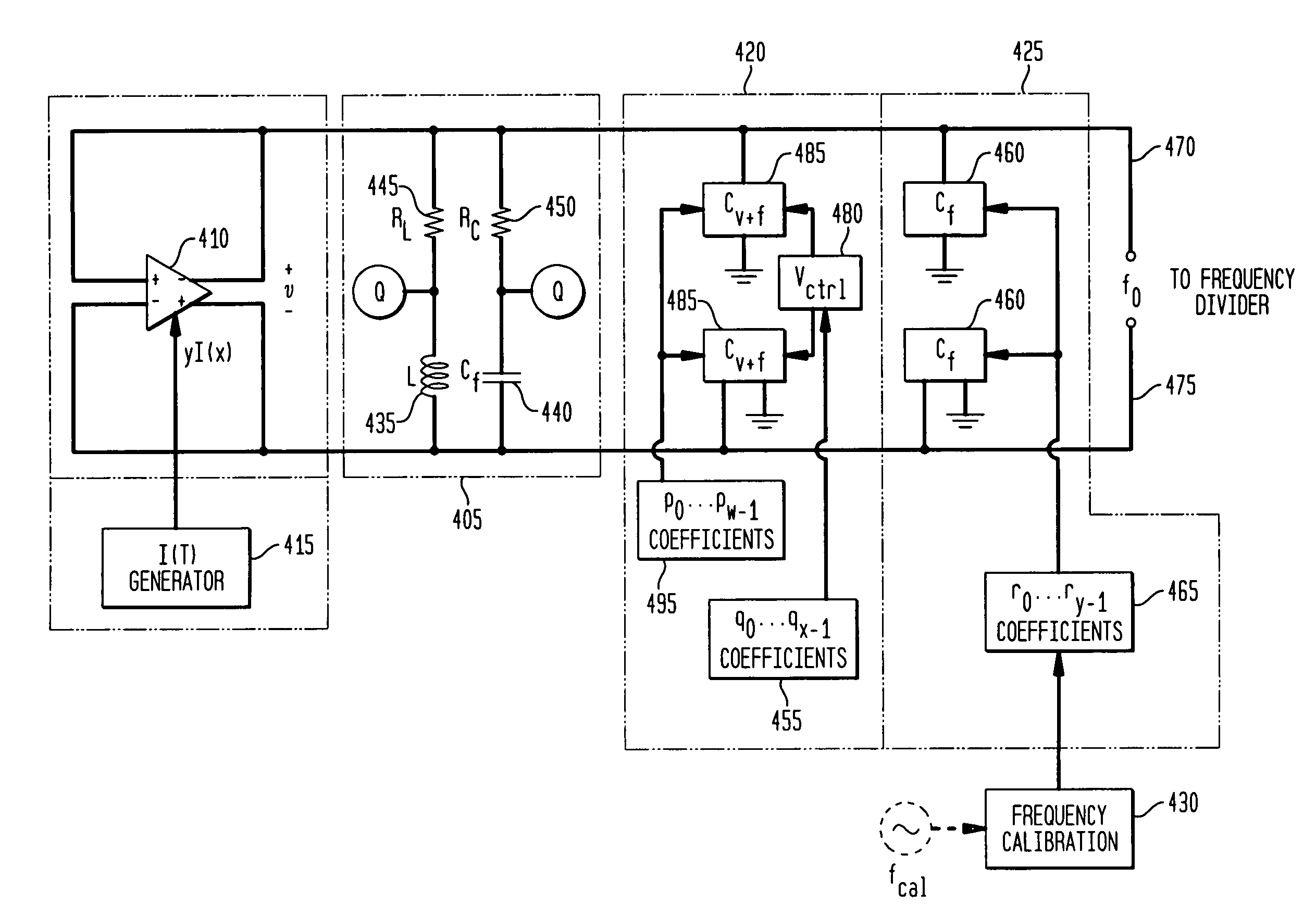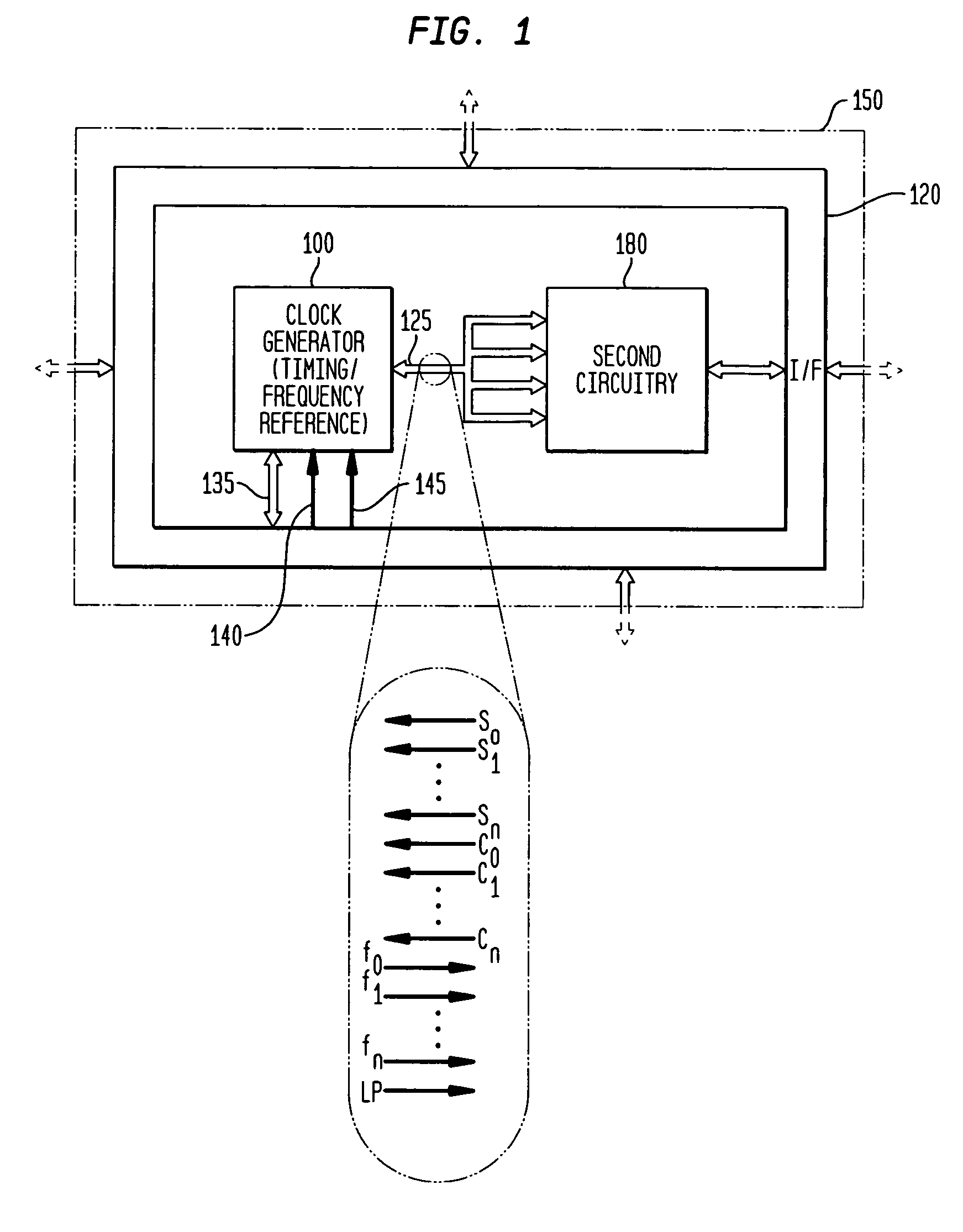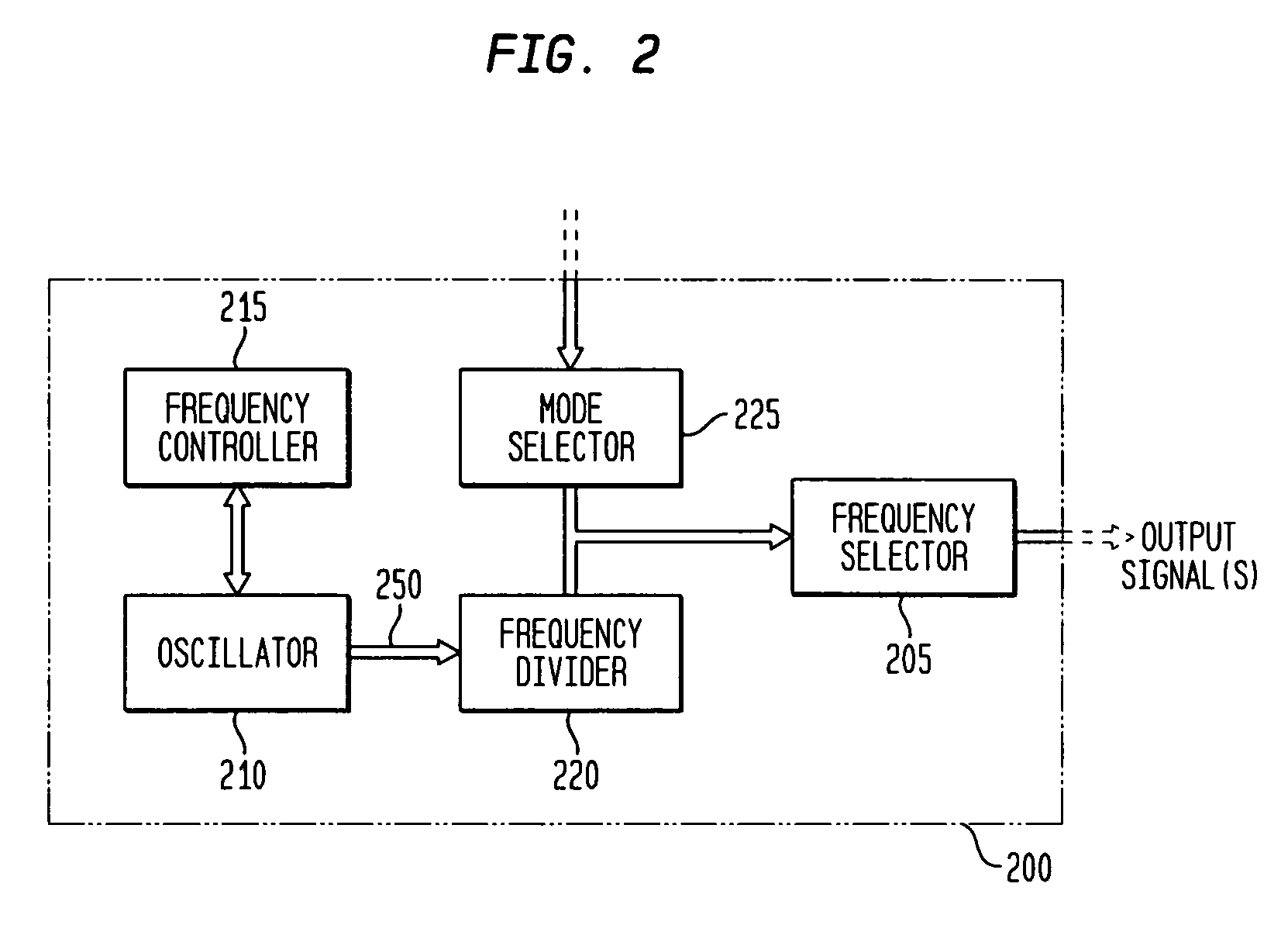Inductor and capacitor-based clock generator and timing/frequency reference
a capacitor-based clock generator and clocking signal technology, applied in the direction of pulse generator, generating/distributing signals, pulse techniques, etc., can solve the problems of inability to manufacture as part of the same integrated circuit, affecting the additional power dissipation, and reducing the power dissipation of the additional power, so as to achieve significant noise reduction, phase noise reduction, phase noise power reduction
- Summary
- Abstract
- Description
- Claims
- Application Information
AI Technical Summary
Benefits of technology
Problems solved by technology
Method used
Image
Examples
embodiment 150
[0081]As indicated above, the various embodiments of the invention provide numerous advantages, including the ability to integrate a highly accurate (over PVT and age), low-jitter, free-running and self-referencing clock generator and / or a timing and frequency reference with other circuitry, such as illustrated in FIG. 1. FIG. 1 is a block diagram illustrating an exemplary system embodiment 150 in accordance with the teachings of the present invention. As illustrated in FIG. 1, the system 150 is a single integrated circuit, having a clock generator and / or timing / frequency reference 100 of the present invention integrated monolithically with other, or second, circuitry 180, together with interface (I / F) (or input / output (I / O) circuitry) 120. The interface 120 will generally provide power, such as from a power supply (not illustrated), ground, and other lines or busses to the clock generator 100, such as for calibration and frequency selection. As illustrated, one or more output clock...
first embodiment
[0224]For example, the resonator typically comprises one or more inductors and capacitors, forming one or more LC-tanks or LC resonators. In a first embodiment, a double-balanced, differential LC oscillator topology is utilized. In other exemplary embodiments, differential or single-ended LC oscillator topologies may be utilized, for example, a single-ended Colpitts LC oscillator, a single-ended Hartley LC oscillator, a differential Colpitts LC oscillator (both common base and common collector versions), a differential Hartley LC oscillator (also both common base and common collector versions), a single-ended Pierce LC oscillator, a quadrature oscillator (e.g., formed from at least two double-balanced, differential LC oscillators), or an active inductor LC oscillator (which may be implemented to be either differential or single-ended) Additional LC oscillator topologies, now known or which become known, are considered equivalent and within the scope of the present invention.
[0225]Th...
PUM
 Login to View More
Login to View More Abstract
Description
Claims
Application Information
 Login to View More
Login to View More - R&D
- Intellectual Property
- Life Sciences
- Materials
- Tech Scout
- Unparalleled Data Quality
- Higher Quality Content
- 60% Fewer Hallucinations
Browse by: Latest US Patents, China's latest patents, Technical Efficacy Thesaurus, Application Domain, Technology Topic, Popular Technical Reports.
© 2025 PatSnap. All rights reserved.Legal|Privacy policy|Modern Slavery Act Transparency Statement|Sitemap|About US| Contact US: help@patsnap.com



